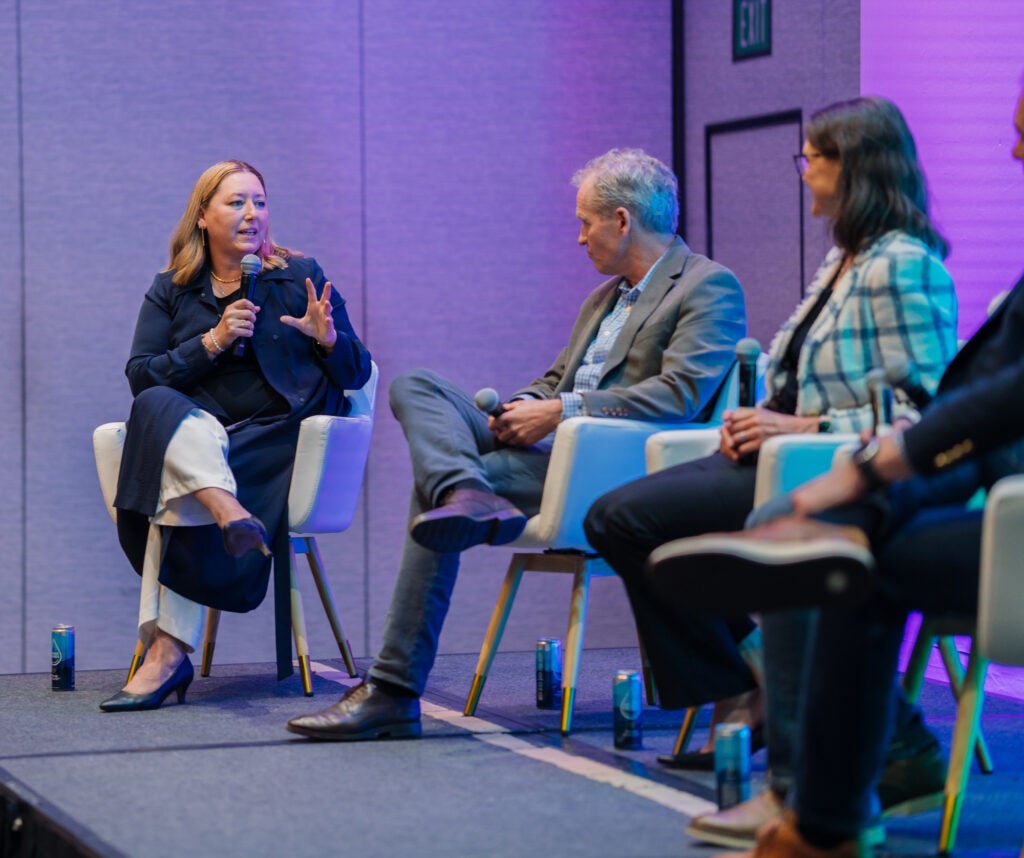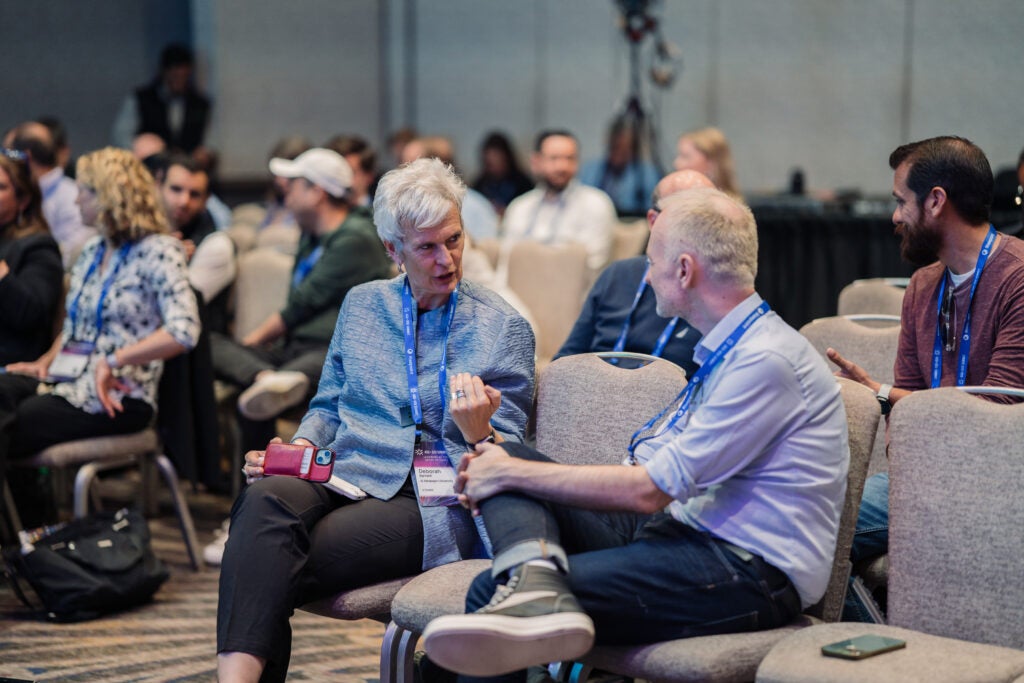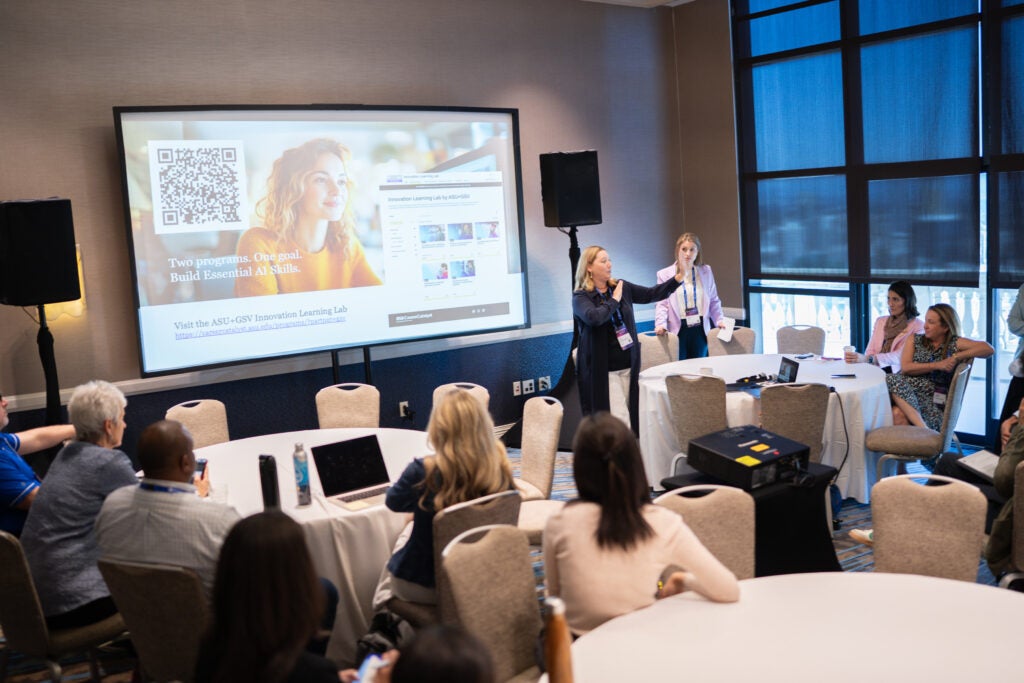Rewriting the operating system of education

At ASU-GSV, Day 3 explored what comes after access — and how to build it right.
What happens after you open the door to your education, but the system inside still needs remodeling?
Day 3 of the 2025 ASU-GSV Summit was all about rethinking the architecture of education. As AI, workforce shifts and learner expectations reshape the field, leaders across sectors shared how they’re building systems that are more responsive, more transferable and more human.

From overhauling credit mobility and credentialing to starting career-connected learning earlier in life, the day’s conversations reinforced a clear message: personalization, relevance and real-world alignment are no longer optional. They’re the new baseline.
Takeaway 1: Tech can’t replace care — but it can make space for it.
In the session “Education operating system: updates ready to be installed,” panelists emphasized that AI’s greatest promise isn’t automation — it’s augmentation. When used well, AI can reduce routine workload and free up time for deeper teaching and connection.
“We can’t talk about AI without talking about what it means to be human,” shared panel moderator Kim Merritt, vice president at ASU’s Learning Enterprise. “The more we connect, the more we relate, the more we love, the more we care, the better off we’ll be.”
Speakers from AWS, 2U, Axim Collaborative and Cengage echoed that sentiment, framing AI as a co-pilot — not a replacement — for educators.
Takeaway 2: Learners need pathways that value what they know.
Sessions including “Training, certification and degrees: curating value-rich pathways” and “The skills imperative” explored how institutions are recognizing a broader range of learning — through microcredentials, credit for prior learning and hands-on experience.
These value-rich models are especially important for learners who haven’t followed traditional academic routes. In the Clark County School District in Nevada, for example, Harmony certificates are being used to train staff and address absenteeism, showing how credentials can serve both individual learners and institutional goals.
Takeaway 3: The future of credit is portable, transparent and AI-powered.

In “Modernizing credit mobility in support of postsecondary access and achievement,” panelists called out the long-standing friction in how credits transfer, and how AI can finally help smooth the path. From using AI to estimate course equivalencies to surfacing degree requirements in clearer ways, new tools are making it easier for students to understand and act on their options.
This shift isn’t just technical — it’s cultural. Empowering students with data about their learning experiences can help them navigate smarter, ask better questions, and avoid the all-too-common problem of lost credit. With AI-powered systems, the focus moves from bureaucracy to progress.
Takeaway 4: Early exploration builds stronger confidence.
Career-connected learning doesn’t have to wait until high school or college. That was the message from “Practical strategies for turning middle schoolers’ passions into career dreams” and “Reimagining durable skills development for middle school youth.”
Panelists shared how interest-based frameworks—like connecting hobbies to leadership or entrepreneurship—can help students see themselves in the future. When learners build durable skills like communication and collaboration early, they’re better prepared to navigate what comes next.
Takeaway 5: AI fluency is the new workplace literacy.

This week’s launch of the ASU+GSV Innovation Learning Lab marked a major step toward making AI education more accessible — and actionable. The Lab’s new certification series offers self-paced, project-based courses for K–12 educators, higher ed professionals, workforce leaders and teams navigating AI-driven change.
“We didn’t want these to be click-through courses,” said Julia Hieser, ASU+GSV Summit program lead at today’s informational session. “We built them to be active, applied and shared — so teams can learn together and build something that matters.”
The initial set of courses covers topics like generative AI, AI-powered teaching and learning, and workforce analytics. Each one blends flexible, self-paced modules with hands-on projects and practical tools.
Takeaway 6: Real transformation starts on the frontlines.
The session “Foundational learning for the frontline and AI and the future of work” spotlighted the 30% of U.S. workers in essential, low-wage roles. As AI reshapes industries, panelists emphasized that its impact on these workers will hinge not on the tech itself, but on how it’s implemented — and who gets a say.
Speakers from ASU, OpenAI, InStride and the UC Berkeley Labor Center emphasized the need for worker-centered approaches, with an opportunity to streamline reskilling, personalize learning and connect workers with actionable pathways to advancement.
“AI is going to accelerate the return on investment that employers see, which is going to open up the floodgates to a whole new population of learners,” said panelist Craig Maloney, CEO of InStride.

That theme of access through intention carried into the day three session “Workforce Revolution: Transforming Skills Development and Talent Planning for the AI Era.” As Microsoft’s Todd Minor put it, “You cannot participate in the era of AI if you don’t skill.”
Looking ahead
As Day 3 came to a close, one theme kept rising to the surface: the future of education isn’t about who gets in; it’s about how well systems work for everyone once they do. Tomorrow, the conversation continues with a focus on building learner-centered models that can scale access, opportunity and impact. Stay tuned right here in the ASU Learning Enterprise newsroom.